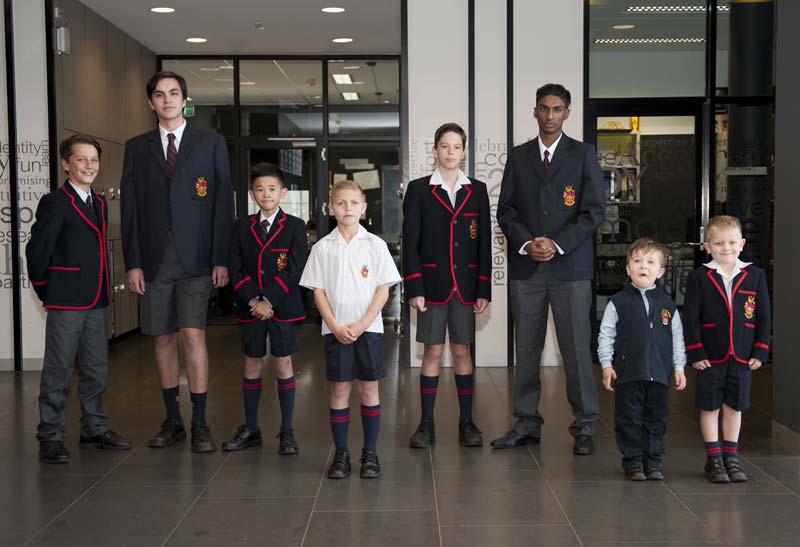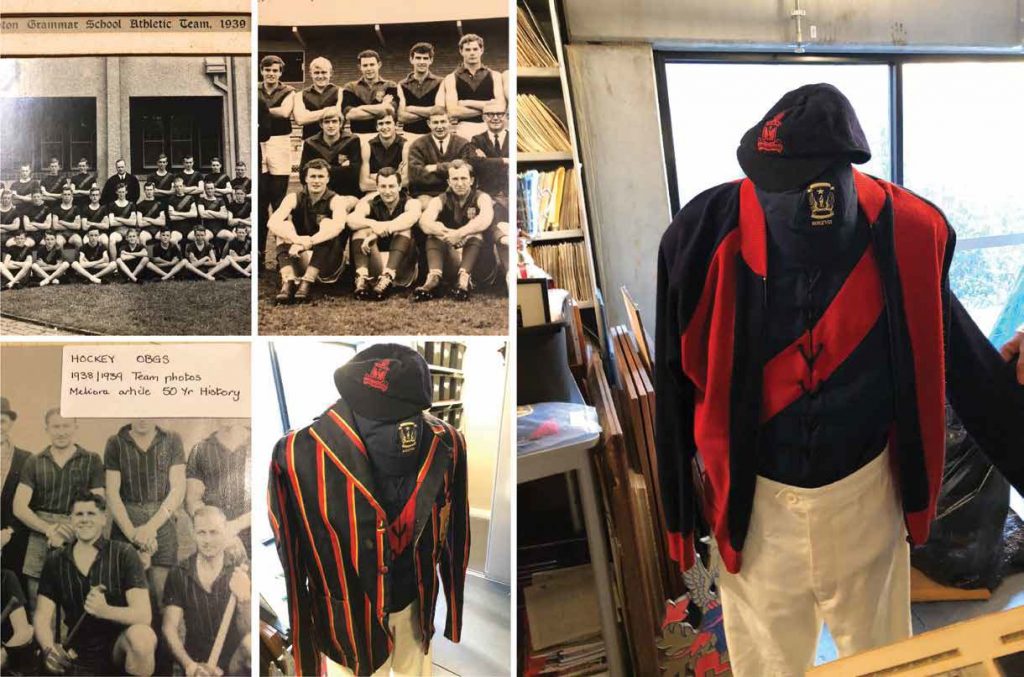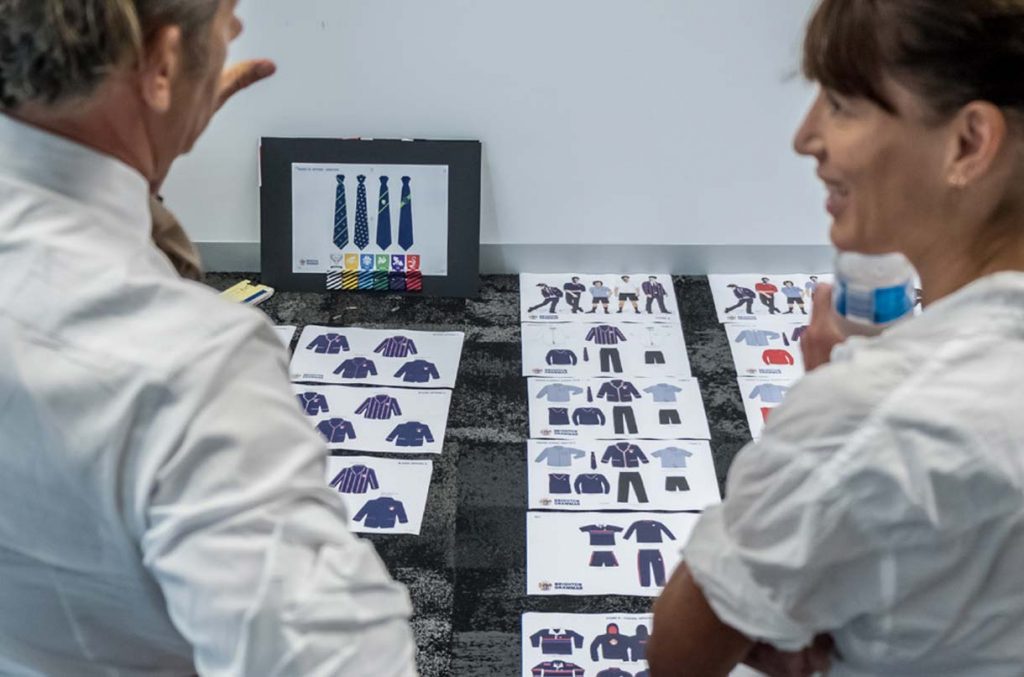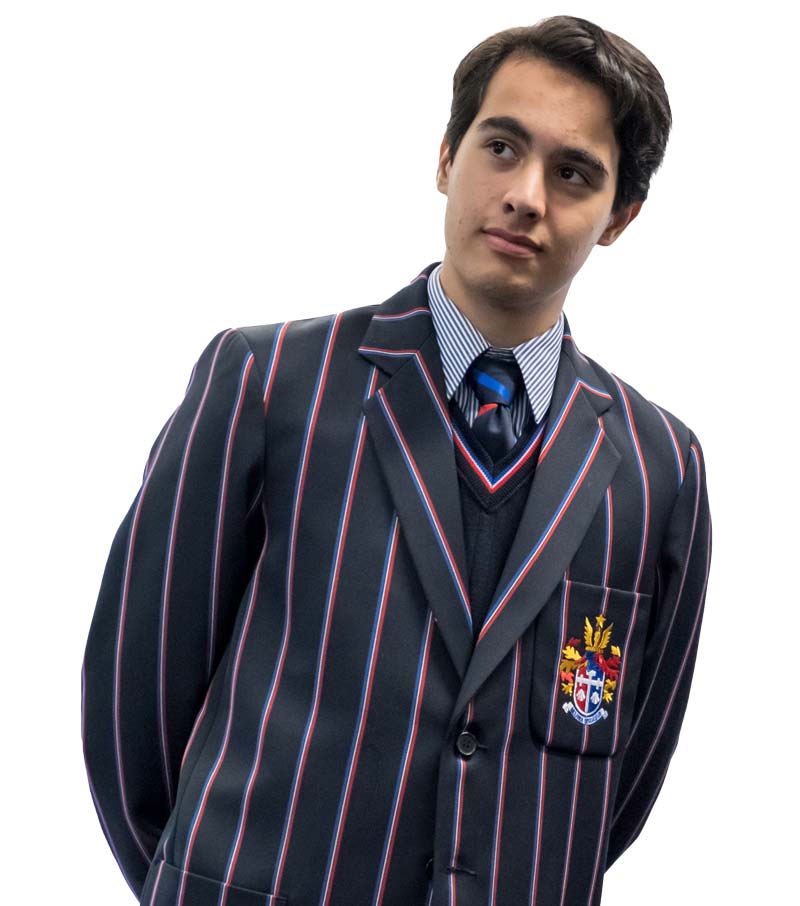Your school uniform is one of your most valuable brand assets. Here is how Brighton Grammar School refreshed theirs.
How important is a school uniform to your brand? Can it evolve without losing its heritage? These are just two of the questions that Brighton Grammar School grappled with in taking their 138 years of school heritage and giving it some 21st century flair.
School uniforms play an important role in representing a school brand. They provide a visible interpretation of the standards expected of students and can give a positive image of the school itself. Think of the uniform as a walking advertisement for your school, as well as a reflection of the calibre of your students. And it’s not just the school that benefits from a uniform; students glean a true sense of belonging to something pivotal in their lives.
So how do you go about building on an already iconic crest or design without losing a school’s identity in a uniform refresh?
The brief
Other than a small change to the Junior School uniform in 2012, Brighton Grammar School had not changed their uniform for more than 60 years. There were also multiple uniform pieces across various competition sports, which were lacking a coherent brand identity. In 2017, the decision was made to refresh their uniform and create a more consistent, brand-aware expression of the School.
A new design was needed for both academic and sports uniforms that was contemporary but also reflected the School’s heritage. The brief also required that the design strengthen visibility in the community, enable students to tackle any activity comfortably and heighten students’ sense of belonging.
The process
It can be a daunting task to change something as significant as a school uniform. A number of key decisions are critical to ensure new designs last at least 20 to 30 years, and are progressive and modern while maintaining a school’s history. These decisions require input and review from various stakeholders including council members, staff, parents and students.
Brighton Grammar School felt it was important to keep parents and families informed about the process and decisions made. Microsites were developed for the sports and academic uniforms, focusing on what was changing and why, along with detailed question and answer sections.
The School made their design journey simpler by forming a Uniform Review Steering Committee and appointing Jonathan Ward, former executive designer for R.M.Williams, to lead the review.
In considering the sports uniform, the School sought out a company that knew the ins and outs of fabrics, fit and finish when it came to physical education. OnTrack Sportswear’s Business Development Executive, David Johnson, noted, “The challenge with the brief was … to take some risks with the initial design concepts, to explore uncharted waters that may align with a modern, progressive, innovative educational institution.”
After an extensive discovery process, which included raiding the archives of the Old Scholars of Brighton Grammar School, the School analysed its brand position. Utilising design workshops along with question and answer sessions, they were able to clarify their positioning, community perception and what they wanted to be known for. This helped shape critical pathways which evolved from the collaborative approach between design teams and stakeholders.
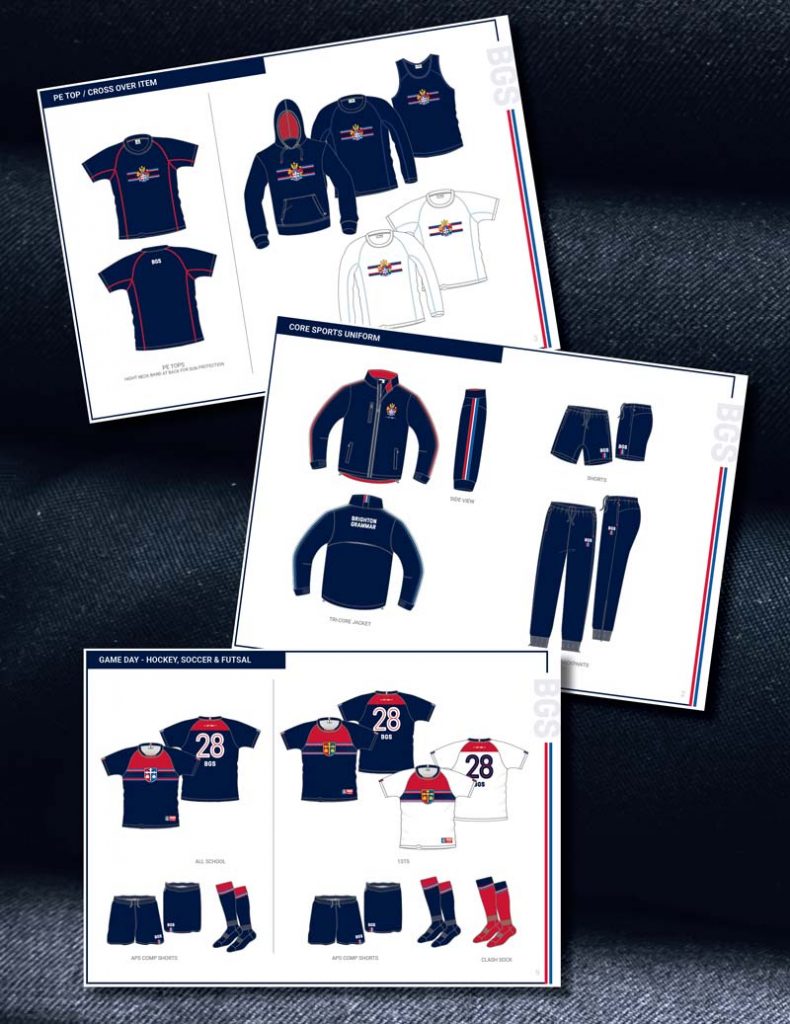
The design
Designs of this nature are rarely achieved and approved overnight. Brighton Grammar School’s uniform design process was no exception, with their master plan taking two years to rollout. Michael Farrugia, Managing Director of school uniform specialists, Noone, said, “This great uniform design outcome arrived from an 18 month to two year comprehensive master plan … in the life of a school, no-one is aiming for an outcome that does not equate to excellence.”
The School’s signature colours of navy and red remain a key element of the new design, which now features a prominent modernised crest. Consistency was created with greater visual alignment between academic and sports uniforms, and with the decision that all boys from Prep to Year 10 would wear the same uniform, with a change of tie from Year 7.
A new striped blazer has been introduced for Years 11 and 12, ensuring that the senior boys are easily recognisable as leaders within the School and the wider community.
The number of individual garments per sport has been significantly reduced with a focus on ‘crossover’ items that can be used between seasons and during the school week.
The breadth and depth of the process has ensured that Brighton Grammar School’s new uniform is wearable, comfortable, versatile and cost-effective. It uses innovative, performance-based fabrics that are durable and present smartly.
The rollout
The rollout In rolling out the new uniform, Brighton Grammar School implemented a two year transition period, giving parents time to adjust. With sustainability also being a big talking point, the School wanted to minimise their impact on the environment. This led to a number of initiatives, including:
- A second-hand uniform shop, where parents could exchange old and new items without the need to purchase new items
- A parent group collecting old uniform stock to send to Indigenous communities with which the School is affiliated
- The School’s uniform stockist being able to reduce wastage by selling remaining items throughout the transition period ¡ Plans to launch an upcycle project with their old uniforms.
Once the rollout of the new uniforms was complete, feedback was overwhelmingly positive. Comments from parents included: “It is great to see better consistency across the school … The school was open to feedback, and realistic and flexible in their thinking by offering a two year transition.”
Feedback from staff affirmed that the project had more than met its objectives: “The new uniform looks sharp and distinct, perfectly blending … its history and its future.”
Insight applied
- School uniforms are a walking advertisement for your school.
- Consider whether your uniform reflects your brand consistently, inspires pride and strengthens visibility in the community.
- Seek input from professional designers and uniform specialists.
- Allow a long lead time, engage your stakeholders early and plan well for the rollout.

